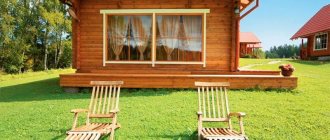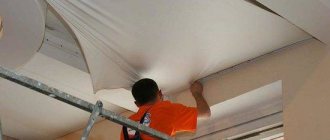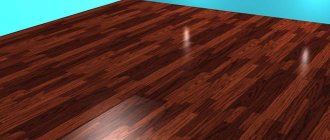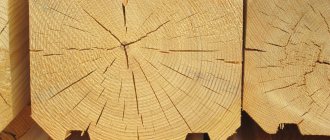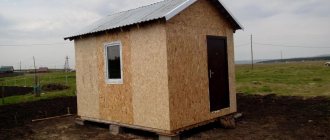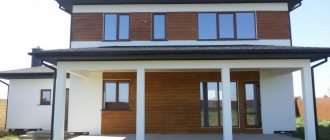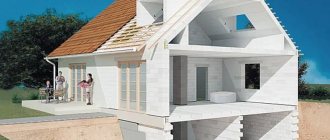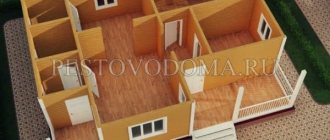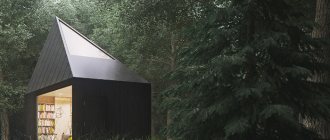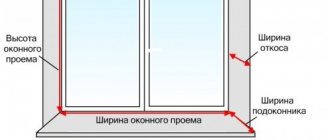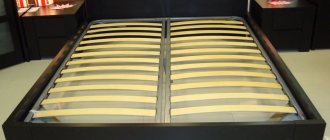Building a house or cottage with a bathhouse from profiled timber is the choice of 40% of buyers. Why this building material is so popular can be understood by re-reading numerous user reviews. For those who have been saving for a house or cottage for years before construction, it is important to plan everything and choose lumber of the appropriate quality at an attractive price.
But it’s difficult to figure out on your own which reviews are true and which ones are written for the sake of advertising in order to sell the product faster. We analyzed reviews about profiled timber, both on forums and on manufacturers’ websites, and for the convenience of readers, we combined the most popular of them in this article.
Main advantages and disadvantages of the material
When choosing profile timber for building a house or cottage, the important advantages are undoubtedly:
- Easy and straightforward assembly, requiring minimal labor.
- High quality buildings with low financial costs for home insulation.
- Conscientious sanding of the wood is sufficient to finish the outer surface of the timber.
- Environmental friendliness of timber.
The disadvantages include:
- When working with such material, not every design idea is feasible. In addition, once the construction work is completed, it is no longer possible to redesign the rooms.
- Under the influence of sunlight, light wood can darken; to avoid this effect, it is necessary to periodically impregnate the material with solutions.
- In frosty zones, where temperatures reach low levels, profiled (dry) timber requires mandatory insulation on the outside of the house.
Often, mineral wool and lining or siding are used as additional wall cladding.
Glued laminated timber
As the name suggests, it consists of dry and even lamellas glued together. The use of this technology makes it possible to practically eliminate the process of shrinkage after completion of construction. The following positive points can be highlighted:
- low thermal conductivity;
- impregnation against mold, rot, fire;
- high performance;
- smooth surface does not require additional finishing;
- the outer side can be rounded to imitate a log.
Profiled timber: more about the pros and cons of use in construction
If, when considering a set of key advantages and disadvantages, doubts about the choice of material have not disappeared, it is worth considering its features in more detail. A number of undeniable advantages definitely arouse constant interest in this raw material.
Profiled timber in construction Source sk-pestovo.ru
Advantages of profiled timber
The property of the timber in question to retain heat in the house is widely known. The thermal insulation rate is significantly higher than that of brick and concrete. In winter, buildings made of profiled timber retain heat perfectly, and in summer they retain coolness.
The characteristics of the building material given to it by nature allow air to flow perfectly through the rock. For the owners of such a house this means:
- Well-ventilated housing.
- No dampness in the room.
- Warranty against mold.
Video description
In this video we will look at the features of construction from profiled timber:
Well-dried profiled timber Source deilo.ru
Disadvantages of profiled timber
The market almost always offers timber for sale immediately after cutting. It is cheaper than dried, but has moisture levels that can have negative consequences 2-3 years after the construction of the house.
Insufficiently dried profiled timber is susceptible to mold and fungi, shrinks, can deform installed doors and roofs and cause cracks in glass.
Natural moisture beam Source remontik.org
To protect it from fungi and mold, profiled timber must be regularly treated with antiseptics, which sometimes creates inconvenience.
See also: Catalog of timber house projects presented at the Low-Rise Country exhibition.
Criterias of choice
Which bathhouse is better to build, frame or timber - everyone decides for himself. However, there are rational selection criteria for each option.
A sauna on a frame is better suited in the following circumstances:
- It is necessary to complete construction as quickly as possible.
- When there is no time to wait for the material to shrink before finishing.
- There is no need to create a permanent structure.
- There is no possibility of attracting special equipment and complex equipment.
- There are no conditions for the formation of a full-fledged foundation.
It is better to build a structure made of timber under the following conditions:
- It is necessary to build a traditional Russian bathhouse in a classical design.
- The steam room will be used for health and therapeutic procedures.
- Lifting equipment and a construction team will be available during construction.
- The supplier is ready to provide properly prepared and dried timber.
- There is a time and place to build a solid foundation.
- The finishing of the premises and façade can be completed by next season.
Advice! Before you decide what kind of bathhouse, frame or beam it will be, and begin its construction, you need to carefully consider the budget of the entire enterprise. As a rule, only a third of its volume is spent on the main material. The rest is spent on finishing, insulation and hiring a team with equipment.
Types and sizes of profiled timber
The types will be discussed in more detail in the article below. Separately, it is worth considering profiled laminated veneer lumber - such a building material is not a solid mass, but a texture assembled from several layers of wood.
A huge advantage of this type of timber is the density of the well-dried material. It is possible to move into a house built from laminated laminated timber immediately after construction and final finishing work.
Glued laminated timber Source nl.decorexpro.com
And now a little about the size chart relevant for this material.
Length
The standard length of the timber is 6 m. But it can vary depending on the location of the building, climate indicators and the purpose of the building. The dimensions of profiled timber can be specially increased: there are units of 12 m and even 18 m. More often, such products are produced to individual order.
Section
Not only the length, but also the cross-section of the timber has different indicators. The choice of wood with such a difference is rich. Profile beams with a section of 220*260 and 150*150 are the most common options in construction. Sections of size 280*280 and 320*320 are used in harsh climatic zones.
Beam with a section of 150*150 Source lessale.ru
General usage practice:
- When constructing a country or country house, a tree with a large cross-sectional index is not required.
- For year-round living in a cottage, it is worth taking into account the natural conditions of the region and using timber with the appropriate dimensions.
Key advantages of using the material
Timber logs are used in the construction of summer country houses, permanent cottages for year-round use, as well as for bathhouses, garages, and various outbuildings. We can list the main advantages of profiled timber:
- Affordable price. This material is significantly cheaper than laminated timber or brick, which makes it more affordable for owners of suburban areas.
- Environmental friendliness. Solid wood retains the ability for natural air exchange: it takes excess moisture from the home atmosphere and releases it back as needed. As a result, it is always comfortable to be in the premises, and it will be easy to breathe in such a house.
- Strength and durability. With proper assembly and regular treatment, the walls can last for decades; the house will not require major repairs. However, he will need regular maintenance care and attention from his owner.
- Light weight. Natural wood is one of the lightest building materials; it does not require a deep concrete foundation. This further reduces construction costs, since it is the foundation that requires large investments.
- Speed of construction. The kit for assembling a log house is pre-made at the production site, and then the house is assembled from ready-made elements. All of them are carefully adjusted to each other, which eliminates the formation of cracks in corners and walls.
- Good thermal insulation qualities. Wood retains heat much better than concrete or brick, which allows you to save on insulation and maintain a comfortable indoor temperature.
- Effective sound insulation. Wooden walls block street sounds, making the rooms quiet and comfortable.
- Excellent decorative qualities. If the sides of the timber are given a semicircular shape, the log house will resemble a log house. Interior walls can be made perfectly smooth for ease of decorative finishing. They do not require rough work; various design ideas can be brought to life.
One of the positive features of this material is its relatively low shrinkage, not exceeding 3.5-6%. Preliminary natural or chamber drying allows you to remove most of the moisture from the material, thereby eliminating further deformation and the formation of cracks. The house will not need caulking as often as a log house made of logs or planed timber with natural moisture. Considering all the advantages, we can conclude: profiled timber is perfect for implementing a wide variety of construction projects.
How to choose high-quality profiled timber
Before assessing the quality of wood, it is important to understand what the proposed material is made of. Timber manufacturers use different types of wood. So, quality assessment:
- Spruce and pine have the lowest cost on the market and are very affordable for timber.
- Larch in house-building technology is often used at the stage of forming the bottom row of a building due to its super-resistance to moisture. The wood of this material does not rot after several years of being under water.
- Pine is wonderful to use. It cracks least of all during the drying of timber logs and during the period of prolonged natural shrinkage of the house. It is often used for the upper parts of the building.
- Cedar trunks are an elite material for timber. They are 1.5 times more expensive and have the following qualities:
- “good” density;
- high strength;
- resistant to dampness;
- has healing properties.
Important! If you use something other than larch on the lower level of the building, perhaps in 2-3 years you will need to dismantle the structure and rebuild the box walls. Yes, this is the most expensive of timber, but it is not recommended to save on it.
Profiled larch timber Source lessale.ru
When constructing walls, a similar or almost identical moisture content of the timber is of great importance when using different types of wood. If the combination is incorrect, the entire building may become distorted. Studying the pros and cons of a house made of timber, it is the risk of such a situation that is considered the main disadvantage during construction.
The craftsmen repeat that the outcome of all construction work when building a wooden house depends on the ability to combine the moisture content of wood.
Warm timber
It has all the characteristics of the glued one described above. It also uses multilayer slats. It differs in that between the sides there is a layer of synthetic heat-insulating material - extruded polystyrene foam. The gluing process under high pressure produces a building element with unique properties. The lumber has the appearance of profiled timber, but has low thermal conductivity. Without the use of additional insulation, they can withstand frosts down to -50 °C.
Profiled timber and similar materials
Let's consider the material in comparison with other types of wood. So, houses are built using the following raw materials:
- Glued laminated timber is the main competitor of profile timber. Technologies for the production of laminated veneer lumber make it possible to obtain high-quality material for the construction of housing. It does not require external sanding or waiting for the building to settle. But this product is more expensive.
- Raw, untreated timber is much cheaper than profile timber, but there is much more work involved with such building materials.
- Calibrated - the quality of the material is high, the shape of the logs is more geometric, but they do not have cut elements for convenient connection of units to each other. With a “lock”, the construction of a house from profiled timber will be faster and more convenient.
Calibrated timber Source mega-les.ru
The stages of building a house from all types of timber are similar. The difference is mainly in the methods of insulation, the natural shrinkage of buildings and the choice of finishing.
Bathhouse construction process
Like any construction project, a sauna made of profiled timber begins with a foundation. Since this material is not entirely heavy, you can choose a screw foundation for the bathhouse. Of course, if you have a bathhouse with an attic and a large terrace, then a “ribbon” is already needed here. Consider this moment seriously. The success of the entire construction depends on how you make the foundation.
After building the foundation, be sure to waterproof it. This will significantly extend the service life of wooden walls. Be sure to saturate the entire beam with fire protection, especially the lower crown. Due to its tongue-and-groove design, building a bathhouse from profiled timber is similar to assembling a construction set. The main thing is to lay out the first crown evenly: exactly along the horizon and maintaining the same diagonals of the perimeter.
Bath walls made of timber
Construction of a bathhouse from profiled timber
Then we lay inter-crown jute insulation on the first row of timber. We drill holes for wooden dowels (usually 20 mm). Place the next row on top with a tenon in the groove. And so, slowly, maintaining the vertical, leaving openings for windows and doors (although they can be cut out later), we build all the walls. This assembly of the “constructor” is very convenient in that there is no need for additional caulking of the walls; they will never be blown through thanks to a kind of lock.
Due to the planed or milled sides, the need for external and internal finishing is eliminated. You can, of course, line the inside with clapboard, but this is at the discretion of the developer. The outside walls can be treated with stain by choosing the desired color. Then with weatherproof varnish, it will look gorgeous.
During construction, the following important point must be taken into account - the shrinkage of the profiled timber. It depends on many reasons. Among them, one can highlight the type of wood, the size and shape of the timber, its length, the time of harvesting the timber, the quality of the wood itself, etc. Remember that the shrinkage of the timber occurs more and faster on the south side, since there is more sun there. If your timber is not dry enough, then on the sunny side it can cause a long wall to “drift” a lot. To avoid such problems, install a load-bearing partition into it. It will restrain the wall from moving.
Bathhouse made of profiled timber.
Small sauna made of profiled timber
Bathhouse made of profiled timber.
A bathhouse built in the summer will complete its shrinkage only after a year, that is, next summer. The winter structure will complete its shrinkage by autumn. These are all approximate dates and they may vary, but be guided by approximately this time period. Using raw and low-quality material, shrinkage of the log house can take two to three years. This also happens when they try to complete construction work on time, thereby violating the entire construction technology.
Now about the dimensions of the profiled timber. If you are not going to add additional insulation to your bathhouse, then what thickness should you choose for the walls? Residents of the western and southern regions of our country can use timber with a thickness of 100-150 mm, in Siberia 150-180 is reasonable, but in the northern regions 180-220 mm will be appropriate. But, as practice shows, it is better to choose timber of greater thickness than thinner. As they say - the supply is not enough.
Video description
We continue the theme of construction from profiled timber. We briefly examine the features of construction from profiled timber in the following video:
Assembling a house from profiled timber Source archvestnik.ru
Projects made from ordinary profiled timber are implemented in several stages. A brief algorithm for constructing a house from timber:
- On the base (foundation) the box of the house is assembled (by analogy with a construction set).
- The construction is then left to settle for about a year.
- After shrinking the log house, the floor and roof are installed, and communications are installed.
- The final stage is interior and exterior finishing.
Profiled timber is a universal building material for the construction of a bathhouse and an additional guest house on the site. The technology for assembling a small building is practically no different from the construction of the main building.
By purchasing a ready-made house project made from profiled timber, the owner will significantly reduce construction costs. The housing package is delivered to the customer in disassembled condition. Includes part numbers and step-by-step assembly instructions.
Important! When wood is properly dried in a warm chamber, products with the required moisture content enter the market. If such logs are purchased, the construction of a turnkey house is completed in one season.
Marking and foundation
The essence of marking is to mark the location of the future structure in the selected area. For this, wooden pegs and ordinary rope or fishing line are often used. An ideal rectangular trench for the foundation will only be possible in a situation where the diagonals of this figure are the same.
To equip the foundation you will need the following materials:
- Concrete;
- Sand;
- Crushed stone;
- Wooden formwork;
- Ruberoid;
- Materials for insulation.
For a bathhouse, you can equip a strip or columnar foundation. The load-bearing capacity of such foundations will be quite sufficient for the construction of even a large building made of timber.
For the foundation, you can equip formwork or do without it at all. Sometimes it is enough to simply equip a trench, put a cushion of sand and crushed stone on the bottom, and then pour concrete. The width of the foundation must be suitable for installing the timber.
Manufacturing and characteristics
At the beginning of the timber manufacturing process, future wood parts must have the same length with a “margin”, i.e. their dimensional parameters must be greater than the calculated ones. When drying, the parts become several millimeters smaller.
Example: to produce profiled timber 200*200, a log must be taken with a cross-section of 210*210 mm.
Workpiece processing Source pro-brus.ru
Profiled timber is produced using the following technology:
- The bark and branches are removed from the tree trunk (a solid piece).
- The log is processed on each side and acquires 4 sides of the correct geometric shape.
- Each of the four resulting sides acquires spikes (elements of the castle).
The usual and most often used length of the timber is 6 m, the cross-sectional shape is trapezoidal. There are full length groove joints on both sides. When assembling elements and installing one on top of another, such tenons and grooves create a stationary structure, and, as a result, strong walls of the house.
Thanks to such connection elements, a kind of “lock,” even a non-builder can build a house from profiled timber. This kind of construction is also called “construction”.
Reviews about profile types
Profile types are also of greater importance during construction. Experts say that the more complex the profile, the better it will retain heat, and additional thermal insulation is not needed. A popular one is the “comb”. When there are more than two tenons and grooves. But, alas, according to user reviews, this material also needs to be insulated over time.
A profile not made by specialists may not have exact shapes, and this nullifies all its quality characteristics.
Of course, there are exceptions, such as large manufacturers. Their entire process is automated, and the tenon and groove have an accuracy of up to mm. But given that delivery to the buyer is not always carried out with all the rules and regulations, and storage at a construction site is usually in the open air, the wood changes its moisture content. This means that the profile is violated.
The new Finnish profile is interesting. It has a complex lock and even with minor violations it will still be sealed. But it also needs interventional insulation.
For construction, it is better to use the simplest profile option with additional insulation. Any construction team can handle this and no additional skills are needed to lay the walls.
Summary of the material
Having studied profiled timber, as well as its pros and cons, we can conclude the following: construction from this material should only be carried out in accordance with the technology; it is important to regularly follow the rules of care (impregnation) of wood. And then, by choosing a timber made from a certain type of wood that is suitable for the purpose and environmental conditions, you can enjoy environmentally friendly and reliable housing.
Interior of a house made of profiled timber Source krsk.au.ru
